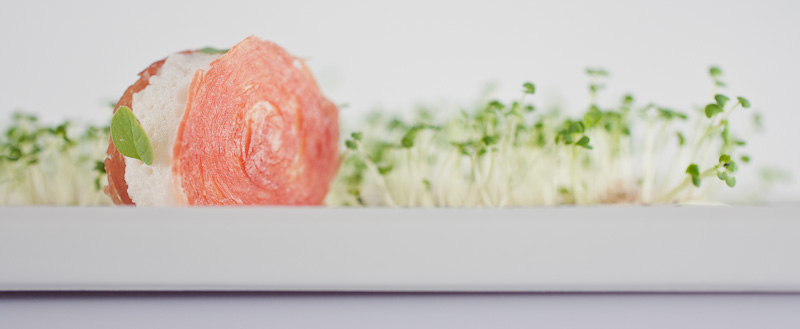
My gardening efforts these past few months are starting to come to fruition. A bit stressfully so, actually; I’m not sure how long the window is in which many of the things I’ve planted will be at ‘optimum Alinea quality’, so I’ve been putting a bit of pressure on myself to schedule everything out and be as productive as I can while all these plants are at their height of viability. One dish involving Tomatos has a very beautiful garnish of baby cucumbers with the blossoms still attached. Determined not to shortcut this very cool thing, I planted several cucumber plants about two months ago, not knowing how long it’d take for them to start making fruit. Starting about a week ago, they all became suddenly dotted with dozens of baby cucumbers with beautiful yellow flowers attached. So, figuring it was Get Busy Time, I made a big list of the rest of the ingredients I need for that dish, went to Berkeley Bowl, and found that heirloom tomatoes–the hero ingredient of the dish–aren’t in season here at all yet. The few I found were sloppy and falling apart. Ugh. I had a crisis of conscience for a few minutes, and Sarah said “You can’t make an Alinea tomato dish with shitty tomatos.” I sighed, knowing she’s right, but I don’t know how long the cucumber plants will continue to make little baby cucumbers (if anyone reading this knows, I welcome advice), so I resigned to delay this dish until the heirlooms come into season properly around here (at which point they will be awesome), and to re-plant more baby cucumber plants in the hopes that in a few months when THEY start making babies, I’ll have proper tomatoes to work with.

After all this I backpedaled a little bit, trying to figure out what else I could do to stay productive. Thankfully, also coming into proper age is an herb I planted in January from seed called Zuta Levana, which I grew for this dish (and a few others). I got the seeds from a, um, seedist (seedery?) in Canada, and have been growing them in my window sill. They look relatively unassuming, but taste like…Barbasol? Ok, maybe that’s a little gross and unfair; they are powerfully minty, but not exactly ‘minty’, more ‘menthol-y’, with a bit of anise mixed in as well. A little bit goes a long way, too…one fingernail-sized leaf of this in your mouth is pretty much like slapping a full palmful of barbasol onto your tongue.

Anyway, since the Zuta was getting nice and big, I went about preparing things for the rest of this dish, which is relatively simple. I’m basically making a little ‘cookie sandwich’, like an oreo or something, only the ‘cookies’ are discs of dehydrated prosciutto, and the filling is a sponge made from passion fruit. To make the prosciutto chips, I stacked several slices of prosciutto, rolled them up into a roll about 1.5″ in diameter, then wrapped the roll in plastic wrap and froze it overnight. The next day, I sliced the roll as thinly as I could (I’m meant to use a meat slicer for this, to ensure uniformity and also to help keep the slices impossibly thin, but I don’t own a meat slicer yet, so I just tried to work as carefully as I could with my knife). I’ve harped before on this blog about using proper equipment, and it’s plain to see why here; it’s extremely difficult to cut a slice of this stuff perfectly uniformly in thickness, which in turn means when you dehydrate the (uneven) disks, they pucker and bend because some parts dry out quicker than others. It still worked pretty ok, but obviously wasn’t ‘perfect’.
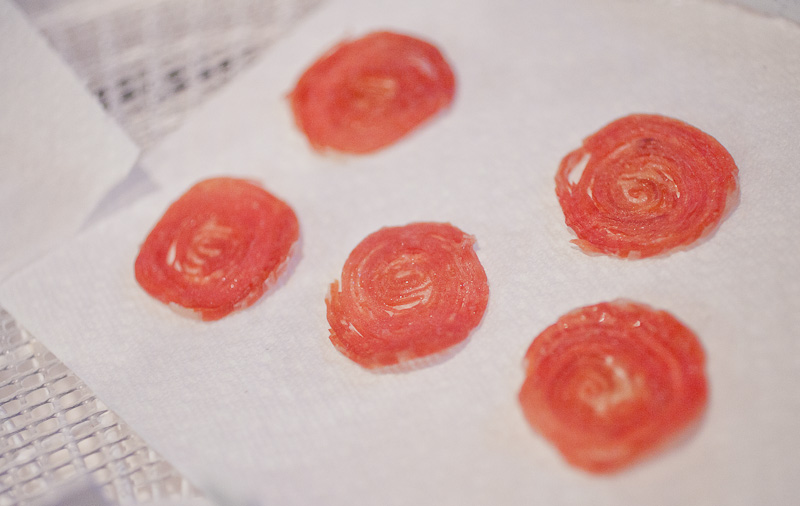
When Sarah and I lived in New Zealand, she fell in love with passion fruit. Weta awesomely provided fresh fruit every morning in our kitchens for breakfast, most of which was tropical and ultra-fresh. Passion fruit was almost always included, as it grows natively there and is pretty cheap to buy. When we arrived here, we were excited and horrified to find that Berkeley Bowl does carry passion fruit…at about $2 per fruit. Sarah has refused to buy any on principle since she got here, so I was excited to make this one because I knew she wouldn’t turn down some bites of the fruit as I was working.
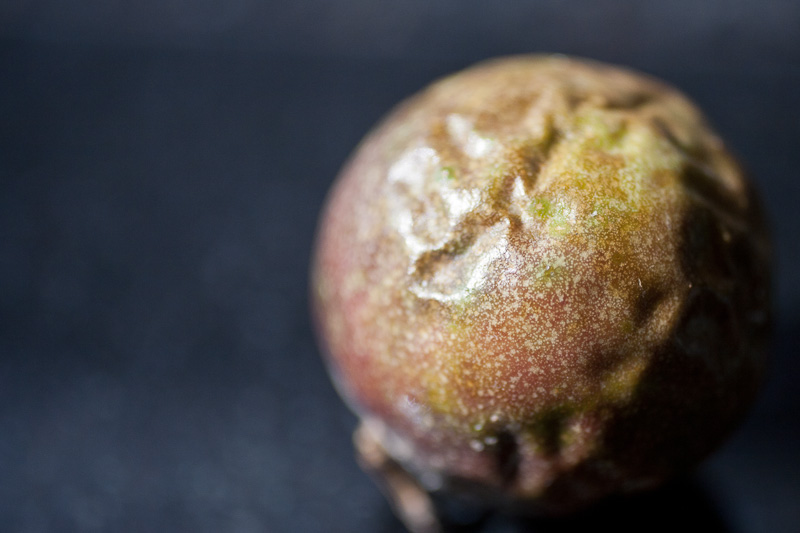
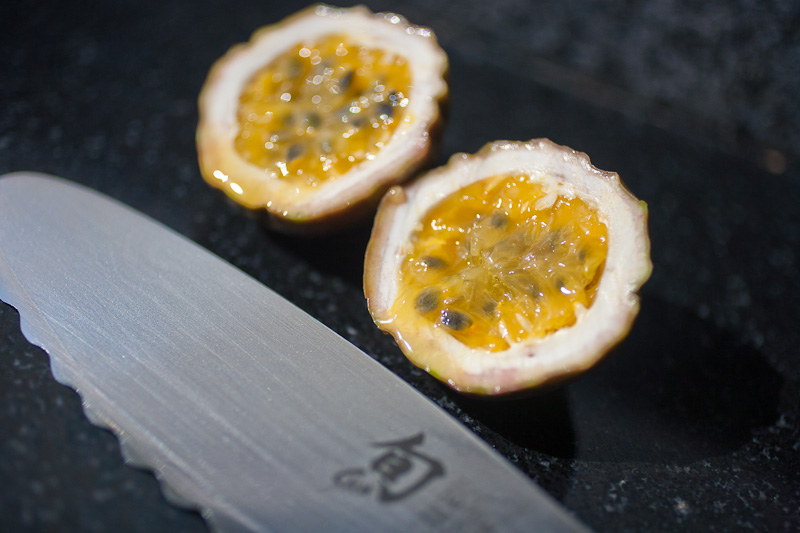
I cut open the fruits and pushed most of the pulp through a strainer to separate out the crunchy seeds. I also simmered the rind in a simple syrup, which steeped out the flavor and resulted in a passionfruit syrup mixture.
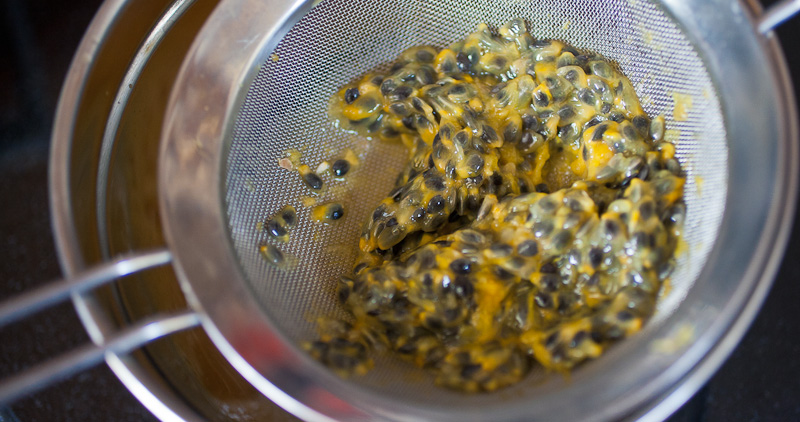
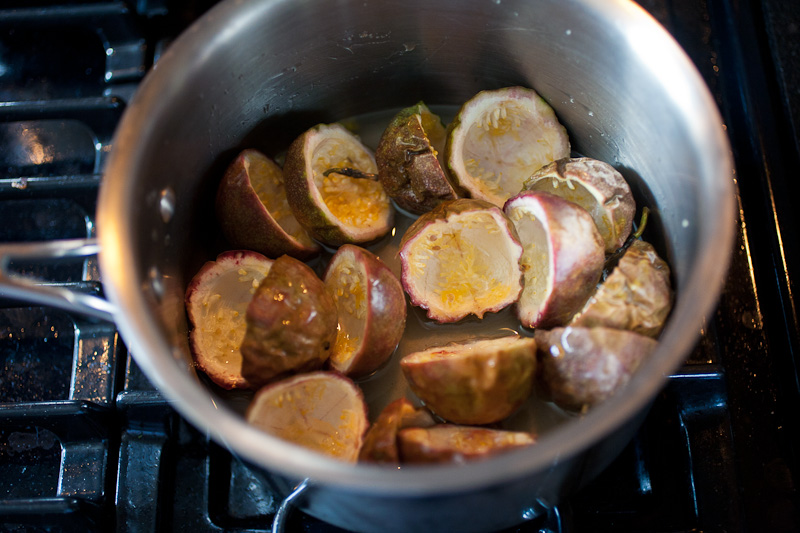
The syrup and strained fruit puree are heated with water and mixed with gelatin. Then the mixture is whipped with a stand mixer. As it’s whipped, it cools and starts to resemble a meringue (this technique is so cool to me). I spread the meringue on a sheet tray and refrigerate it until it sets, at which point it resembles a moist sponge that tastes powerfully of passion fruit. I cut discs of the sponge to fit the prosciutto chips with a small round cookie cutter.
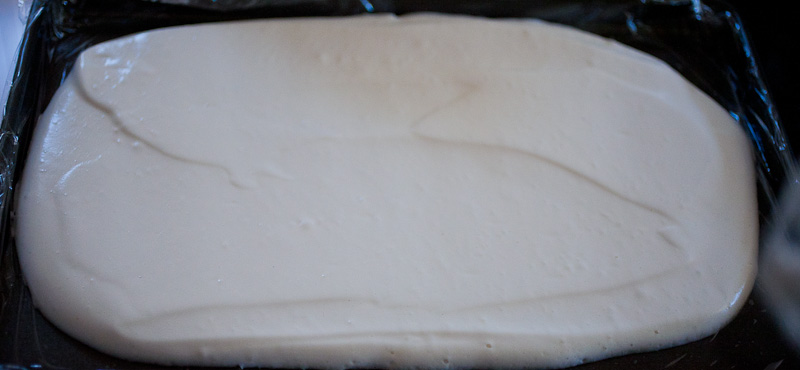
The passion fruit was labeled as coming from New Zealand, and struck us both as being surprisingly fresh for having traveled all that way. It wasn’t until I went to clean up all the produce labels I’d peeled off the fruits that I noticed why they were probably so fresh (and more tart than we remembered them being):
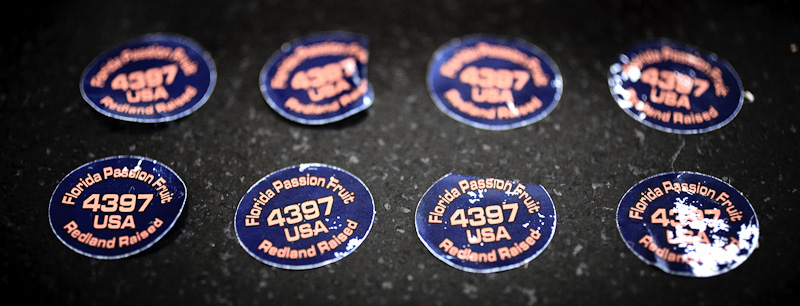
Kinda not cool, Berkeley Bowl.
Once I made a few prosciutto/passion fruit sammiches, I garnished them with a few leaves of zuta levana and served them on a bed of sprouting thyme. I made this by soaking some paper towels in water, sprinkling a few packets of thyme seeds on it, and waiting for about a week and a half. I spritzed the paper towel daily with a little mist bottle to keep it wet.

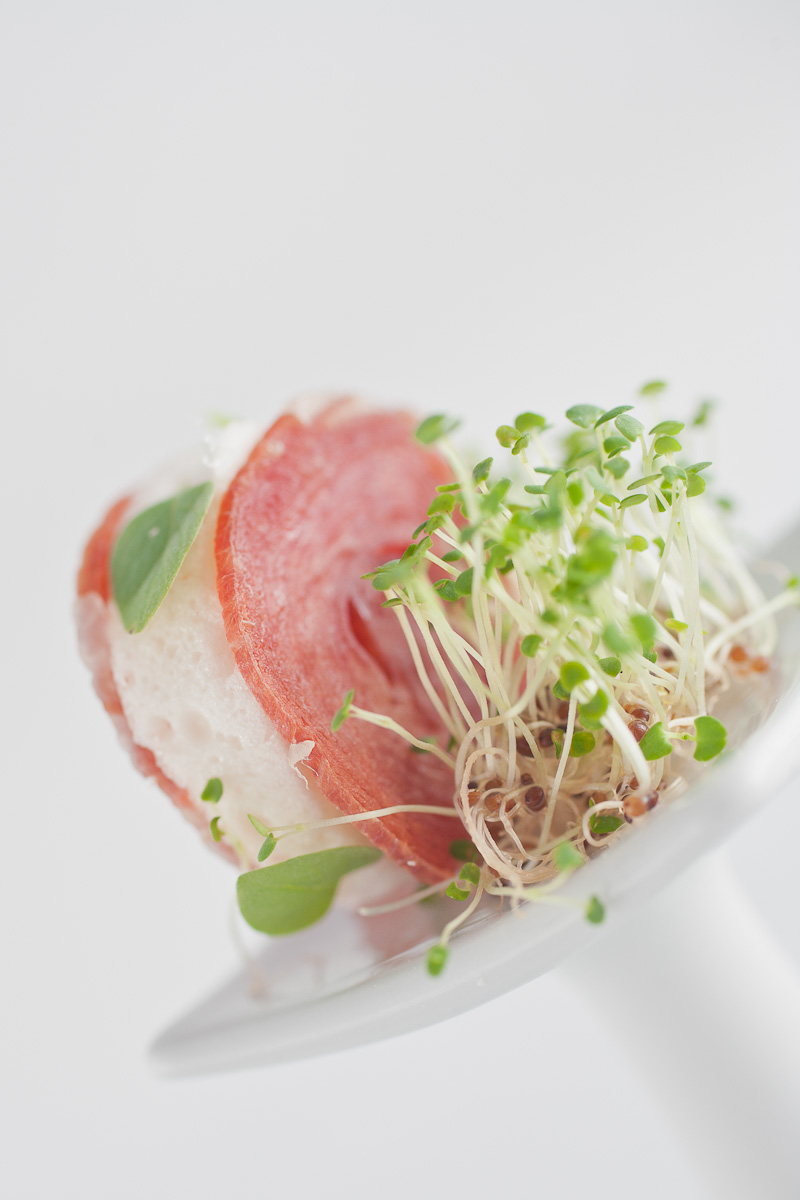
I ended up with more fruit puree and passion fruit syrup than I needed, plus I still had the seeds. Determined not to waste $20 worth of this fruit, I used the extras to make a passion fruit and cilantro ice cream.
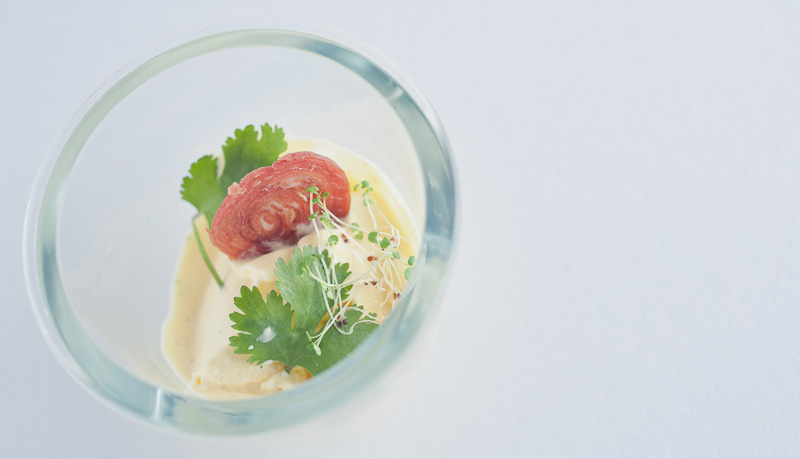
I garnished the ice cream with some of the thyme, a prosciutto chip, and some cilantro leaves, then got mad snuggly on the couch to watch a Harry Potter (we’re watching through all of them in preparation for the big finale coming soon).
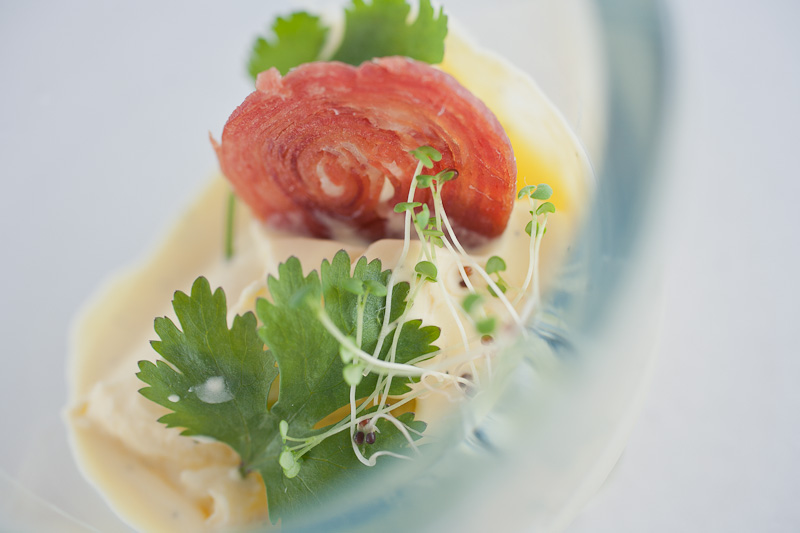
This looks yummy and light. You never say how it turned out!